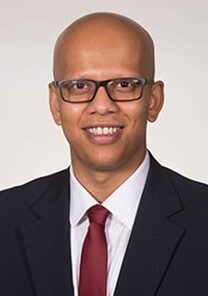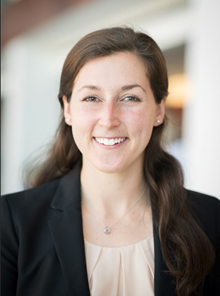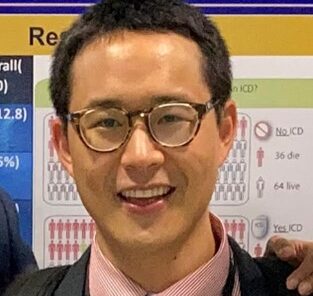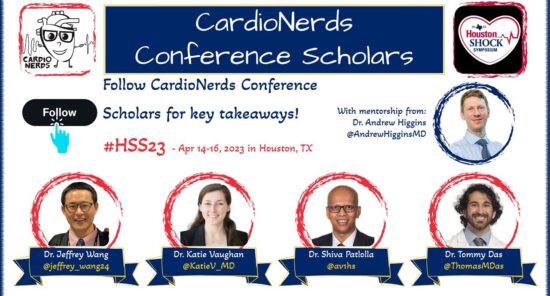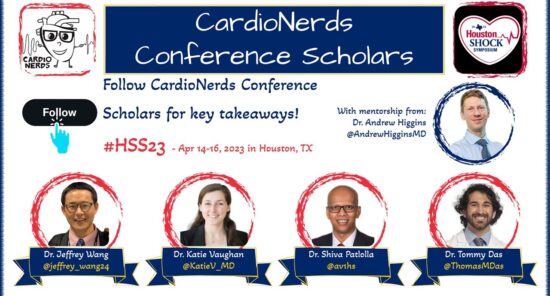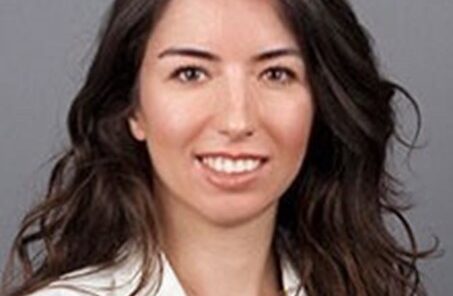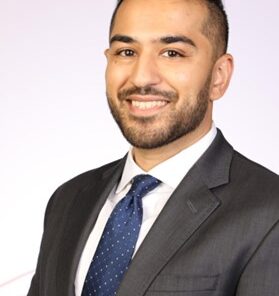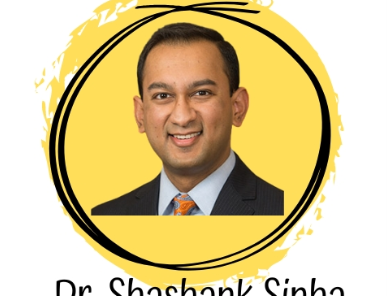Credit: Original article published here.There are no solutions, only tradeoffs. In acute myocardial infarction, we have tradeoffs between coronary supply and myocardial demand. In terms of supply, we have made significant progress by reducing ischemic time but see a plateau of benefit at 90 minutes. In terms of demand, we currently utilize pharmacotherapy which may be too little too late, especially in patients with large infarct size who have progressed to cardiogenic shock and cannot tolerate these therapies. We see these trends in the outcomes data. While advances in restoring supply have led to high short-term survival rates, long-term outcomes remain challenging due to the incidence of heart failure which reaches nearly 75% at 5 years (1). In-hospital mortality for cardiogenic shock remains abysmal despite advances in reperfusion. Thus, it is paramount that we find therapies capable of limiting infarct size without compromising systemic perfusion. Mechanical unloading is one option that has been shown to reduce infarct size in preclinical studies since the 1980s. Translating the efficacy of preclinical studies to effectiveness in the real world, however, remains a work in progress. The initial roadblock was inadequate technology. In 2008, the FDA approved the Impella, a percutaneous transaxial flow pump,
Credit: Original article published here.The implantable cardioverter defibrillator (ICD) is frequently utilized in patients with heart failure for primary and secondary prevention and treatment of unstable arrhythmias. This device is a unique medical intervention that may improve survival for select patients but does not necessarily improve quality of life and may even lead to detrimental impacts. At the 2023 Houston Shock Symposium, Dr. Haider Warraich – director of the heart failure program at VA Boston Healthcare, assistant professor at Brigham and Women’s Hospital and prolific author highlighted the psychological stress that can impact ICD recipients and the physician role in addressing these stressors with our patients. Psychological stressors can present in many ways in ICD recipients; ranging from feeling phantom shocks to avoiding engagements due to fear of shock and persistent hyper-vigilance. Identified risk factors for increased psychosocial distress in ICD recipients include younger age less than 50 years old, female gender, low social support, premorbid psychiatric diagnosis, and greater than 5 appropriate or inappropriate defibrillations.1 Dr. Warraich challenged healthcare providers at the Houston Shock Symposium to consider the physician role in empowering patients to shift their mindset after an ICD shock from victimhood thinking with poor coping skills to
Credit: Original article published here.There is increasing recognition that left ventricle (LV) unloading is important for patients in cardiogenic shock supported by venous-arterial extracorporeal membrane oxygenation (VA-ECMO) – particularly, those in shock due to acute myocardial infarction (CS-AMI).1 Unloading the LV is commonly performed by inserting additional temporary mechanical circulatory support (tMCS), including devices like a percutaneous left ventricular assist device (pVAD, i.e., Impella®), CentriMag®, or an intra-aortic balloon pump.2 One approach to unload the LV during VA-ECMO that is infrequently used involves placement of a left-atrial drainage catheter that is placed via interatrial transseptal puncture. This would allow for direct left atrial drainage, thereby reducing pulmonary capillary wedge pressure and left ventricular preload thereby unloading the LV. This strategy is described as left atrial VA-ECMO or “LAVA-ECMO”. During the 2023 Houston Shock Symposium, Dr. William W. O’Neill presented a case report about a patient with severe aortic regurgitation resulting in cardiogenic shock requiring the use of LAVA-ECMO as a bridge to definitive repair. Dr. Jeffrey Wang had a poster presentation on a case report on a patient with refractory cardiogenic shock initially cannulated with VA-ECMO as a bridge to heart transplant. However, the patient developed worsening pulmonary edema requiring
Credit: Original article published here.CardioNerds correspondents Drs. Shiva Patiolla and Jeff Wang are covering The Houston Shock Symposium 2023. They are joined by the founder and director of the Houston Shock Symposium, Dr. Marwan Jumean, and Dr. Anju Bhardwaj, who currently serves as an assistant professor of medicine in the section of cardiology at the McGovern Medical School. The group discusses the theme of this year’s symposium, which is Breaking Boundaries, and will focus on the five areas of cardiogenic shock management, which are: Cardiac ICU, Cath Lab, Medical ICU, Operating Room, and Surgical ICU. See what these thought leaders had to say! Dr. Shiva Patiolla: Hello, everyone and thank you for joining us today. I am Shiva Patiolla. I’m a cardiology fellow at Baylor University Medical Center in Dallas, Texas, and a CardioNerds FIT Trialist. Dr. Jeff Wang: All right. Hi, everyone. My name is Jeff Wang, and I am a cardiology fellow at Emory University and a CardioNerds FIT Trialist as well. And we are really excited to serve as CardioNerds Conference Scholars for the 2023 Houston Shock Symposium with mentorship from Dr. Andrew Higgins. Dr. Shiva Patiolla: It is our great pleasure to be joined by the
Credit: Original article published here.This year, the CardioNerds are covering the 2023 Houston Shock Symposium, or HSS23. In this interview, CardioNerds Conference Scholars Drs. Tommy Das (Cleveland Clinic), and Katie Vaughan (Israel Deaconess Medical Center) spoke with Dr. Dan Burkhoff, who’ll be presenting the teaching and education in advanced cardiovascular hemodynamics course, or TEACH course for HSS23 attendees. Dr. Burkhoff spoke in-depth about Harvi, which is interactive simulation based application developed for teaching and researching many aspects of ventricular mechanics and hemodynamics. See what the CardioNerds and Dr. Burkhoff had to say. Dr. Tommy Das: Hi, everyone. My name is Tommy Das. I’m a current second year general cardiology fellow at the Cleveland Clinic, and Service Program Director for the CardioNerds Academy, a fellowship in digital medical education. Dr. Katie Vaughan: And my name is Katie Vaughan, and I’m a chief resident at Beth Israel Deaconess Medical Center, where I will remain for cardiology fellowship next year. And I’m a CardioNerds scholar for my project to create a curriculum to teach trainees all about different mechanical circulatory support devices called Devices in a Dash. And we are so excited to serve as CardioNerds’ conference scholars for the 2023 Houston Shock
Credit: Original article published here.At the 2nd annual THT 2023 conference, experts discussed what’s known and what’s cooking in the area of left ventricular unloading and myocardial recovery. Dr. Douglas Mann from Washington University School of Medicine in St. Louis set the stage with a ten-minute deep dive into the physiology of ventricular load. After a recall of the principles of the Frank-Starling curve for the audience, a discussion of the different molecular level signal transduction patterns that occur as a result of increasing load/stress of the myocytes eventually leading to cardiac hypertrophy, ensued. He elaborated upon the stretch activated pathways including Integrins, transient receptor potential (TRP) channels and sodium hydrogen exchanger (NHE) implicated in cardiac hypertrophy. Dr. Stravos Drakos from University of Utah Health Sciences Center followed with a review of the results of the RESTAGE-HF trial challenging the prevailing dogma “The failing human heart cannot improve after severe injury”. Guided by predictors of response before LVAD implantation, myocardial recovery incidence of up to 50% is achievable! He emphasized that reverse remodelling after LVAD is not “all or none” with 10% being responders, 30% partial responders and 60% non-responders. He raised the important question of sustainability after LVAD weaning
Credit: Original article published here.The 2023 sessions of Technology and Heart Failure Therapeutics (THT2023) took place on March 20-22nd, 2023 in Boston with great enthusiasm in technologies that are in the pipeline and amazing discussions about ongoing trials that will shape the future of our clinical practice. One of the most striking sessions was “Unloading in AMI: Changing the paradigm from DTB to DTU” presented by Dr. Navin Kapur. He talked about unloading the left ventricle in anterior MI prior to reperfusion to prevent myocardial injury. Since the 1970’s, acute management of ST elevation myocardial infarction has focused on timing of revascularization to prevent myocardial injury (MI). In the light of benefits shown in multiple studies, timely revascularization with balloon angioplasty followed with stenting remained as the standard of care. Despite significant improvements in health care systems to meet the Door-to-balloon time (DTB) of 90 minutes or less, heart failure continues to be an important issue. Approximately 35% of new in-hospital heart failure events in patients older than 65 years of age happen within the context of their first acute MI. In 2013, Navin Kapur et al. sought to answer the question if unloading the left ventricle while delaying coronary
Credit: Original article published here.Presented at the 2023 American College of Cardiology Scientific Sessions, the Building Electronic Tools to Enhance and Reinforce CArdiovascular REcommendations for Heart Failure (BETTER CARE-HF) trial found that automated electronic health record (EHR)-embedded alerts increased prescription rates of mineralocorticoid receptor antagonists versus a message or usual care. Guideline-directed medical therapy (GDMT) comprises four classes of medications recommended by professional societies for the management of heart failure, including mineralocorticoid receptor antagonists (MRAs). However, despite robust evidence of life saving benefit in patients with reduced ejection fraction heart failure, MRAs remain disproportionately underutilized. Methods to improve implementation remains an area of active investigation, with clinical decision support (CDS) tools being one such intervention under study. In this pragmatic, cluster-randomized three-arm trial, Dr. Amrita Mukhopadhyay and colleagues from NYU School of Medicine cluster randomized 2,211 patients at the level of the cardiologist (N = 60 per arm) to receive EHR-based alerts during individual patient encounters, messages about several patients between encounters, or usual care. They included patients with HFrEF, no active MRA prescription, no contraindication to MRA use, and an outpatient cardiologist in the larger health system. The primary outcome was the proportion of patients in each arm prescribed
Credit: Original article published here.TRILUMINATE Pivotal trial 12-month outcomes showed significant improvement in quality of life with tricuspid transcatheter edge-to-edge repair (T-TEER) in patients deemed to have intermediate-high risk for surgery. The results of this first randomized controlled trial that was conducted in such a population were also remarkable with the favorable safety profile of this device. Tricuspid regurgitation (TR) is a prevalent condition that is associated with increased mortality and poor quality-of-life. While the optimal timing of intervention and best strategy remain unclear, many individuals benefit from conservative management with diuresis along with treatment of contributing underlying factors. The importance of a multidisciplinary team discussion is crucial for assessment of need for surgical and transcatheter interventions in patients with refractory TR despite optimal medical therapy. The 2023 American College of Cardiology Scientific Sessions highlighted the full gamut of emerging interventions such as edge-to-edge repair, spacer, coronary sinus cinch, annuloplasty, direct annular plication and transcatheter valve replacement. Despite this growing interest and novel strategies, lack of randomized-controlled trials that study their benefits continues to be an issue. With this backdrop, the 12-month outcomes of TRILUMINATE Pivotal trial were presented at ACC23. TRILUMINATE Pivotal trial is a randomized clinical trial that
Credit: Original article published here.In this CardioNerds podcast: The following question refers to Section 9.5 of the 2022 AHA/ACC/HFSA Guideline for the Management of Heart Failure. Mr. Shock is a 65-year-old man with a history of hypertension and non-ischemic cardiomyopathy (LVEF 25%) who is admitted with acute decompensated heart failure. He is currently being diuresed with a bumetanide drip, but is only making 20 cc/hour of urine. On exam, blood pressure is 85/68 mmHg and heart rate is 110 bpm. His JVP is at 12 cm and extremities are cool with thready pulses. Bloodwork is notable for a lactate of 3.5 mmol/L and creatinine of 2.5 mg/dL (baseline Cr 1.2 mg/dL). What is the most appropriate next step? A Augment diuresis with metolazone B Start sodium nitroprusside C Start dobutamine D Start oral metoprolol E None of the above The question is asked by Western Michigan University medical student & CardioNerds Intern Shivani Reddy, answered first by Brigham & Women’s medicine resident and Director of CardioNerds Internship Dr. Gurleen Kaur, and then by expert faculty Dr. Shashank Sinha. Dr. Sinha is an Assistant Professor of Medical Education at the University of Virginia School of Medicine and an advanced heart failure,

